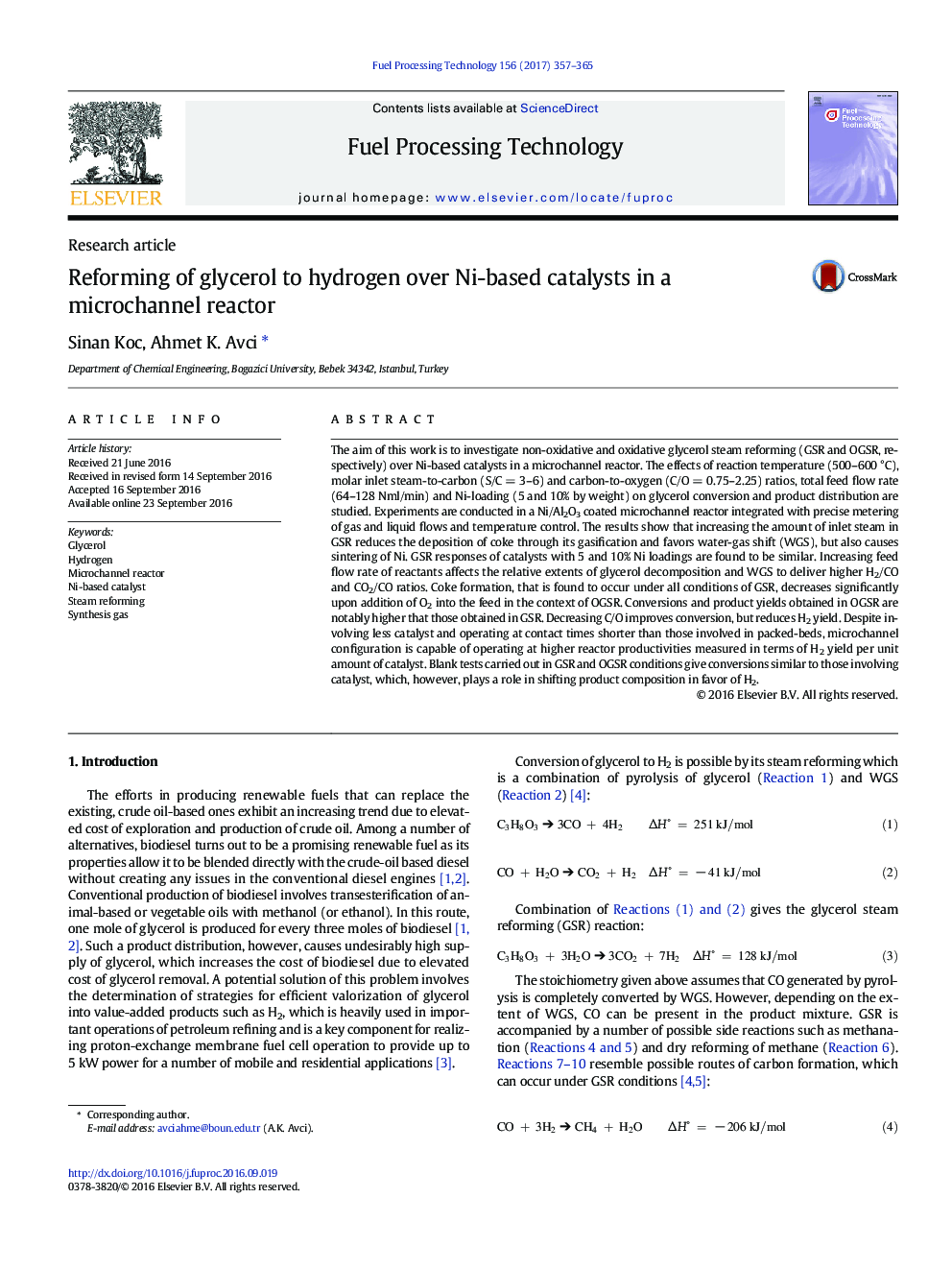| کد مقاله | کد نشریه | سال انتشار | مقاله انگلیسی | نسخه تمام متن |
|---|---|---|---|---|
| 6476678 | 1425390 | 2017 | 9 صفحه PDF | دانلود رایگان |
- Glycerol reforming is studied in a Ni/Al2O3 coated microchannel reactor.
- Microchannel configuration offers higher reactor productivity than a packed-bed.
- Addition of O2 into the feed increases conversion and yields, and reduces coking.
- Increasing S/C suppresses coking and improves H2 yield, but causes sintering.
- Doubling Ni loading provides limited improvements in conversion and product yields.
The aim of this work is to investigate non-oxidative and oxidative glycerol steam reforming (GSR and OGSR, respectively) over Ni-based catalysts in a microchannel reactor. The effects of reaction temperature (500-600 °C), molar inlet steam-to-carbon (S/C = 3-6) and carbon-to-oxygen (C/O = 0.75-2.25) ratios, total feed flow rate (64-128 Nml/min) and Ni-loading (5 and 10% by weight) on glycerol conversion and product distribution are studied. Experiments are conducted in a Ni/Al2O3 coated microchannel reactor integrated with precise metering of gas and liquid flows and temperature control. The results show that increasing the amount of inlet steam in GSR reduces the deposition of coke through its gasification and favors water-gas shift (WGS), but also causes sintering of Ni. GSR responses of catalysts with 5 and 10% Ni loadings are found to be similar. Increasing feed flow rate of reactants affects the relative extents of glycerol decomposition and WGS to deliver higher H2/CO and CO2/CO ratios. Coke formation, that is found to occur under all conditions of GSR, decreases significantly upon addition of O2 into the feed in the context of OGSR. Conversions and product yields obtained in OGSR are notably higher that those obtained in GSR. Decreasing C/O improves conversion, but reduces H2 yield. Despite involving less catalyst and operating at contact times shorter than those involved in packed-beds, microchannel configuration is capable of operating at higher reactor productivities measured in terms of H2 yield per unit amount of catalyst. Blank tests carried out in GSR and OGSR conditions give conversions similar to those involving catalyst, which, however, plays a role in shifting product composition in favor of H2.
Journal: Fuel Processing Technology - Volume 156, February 2017, Pages 357-365
